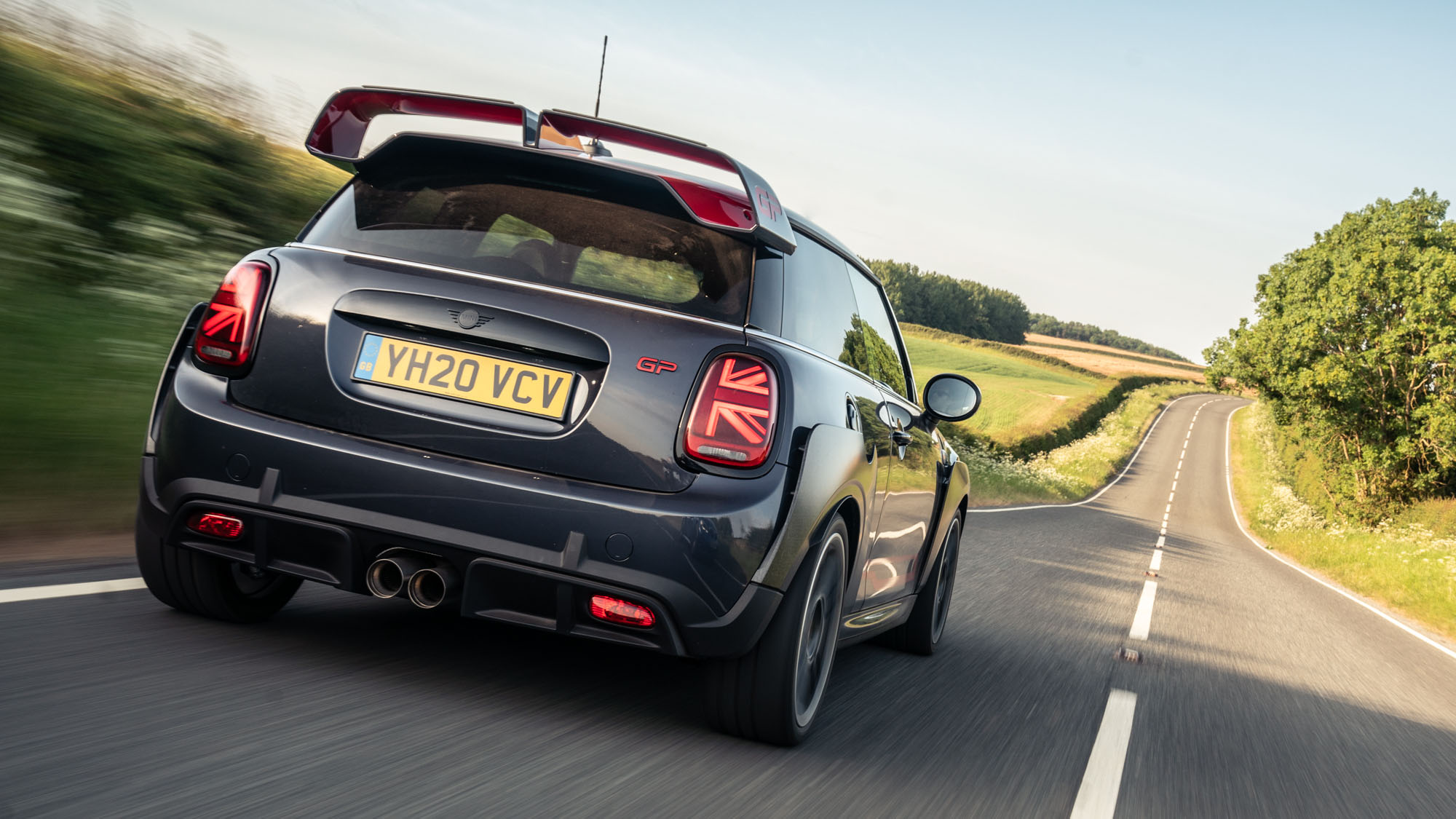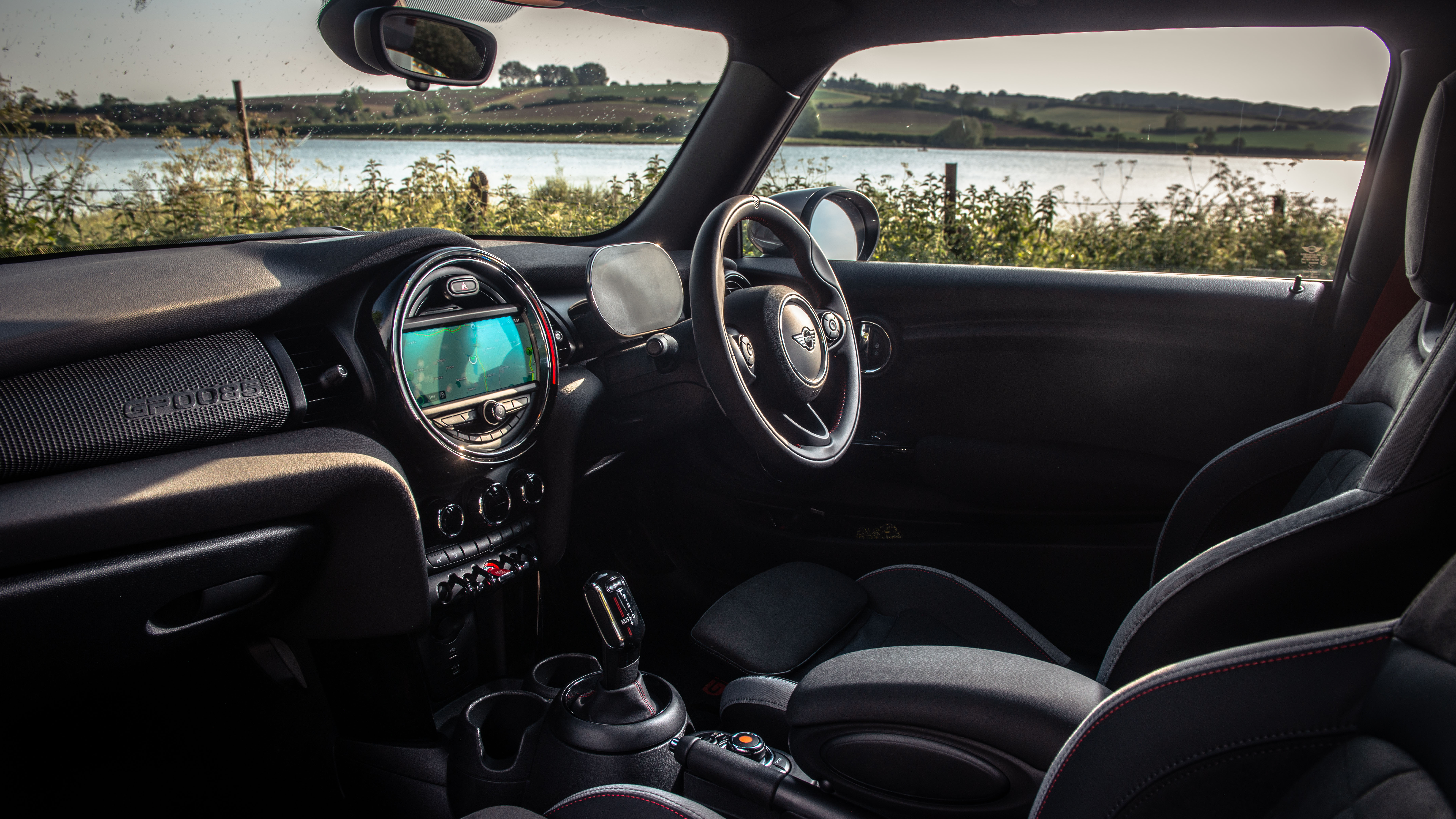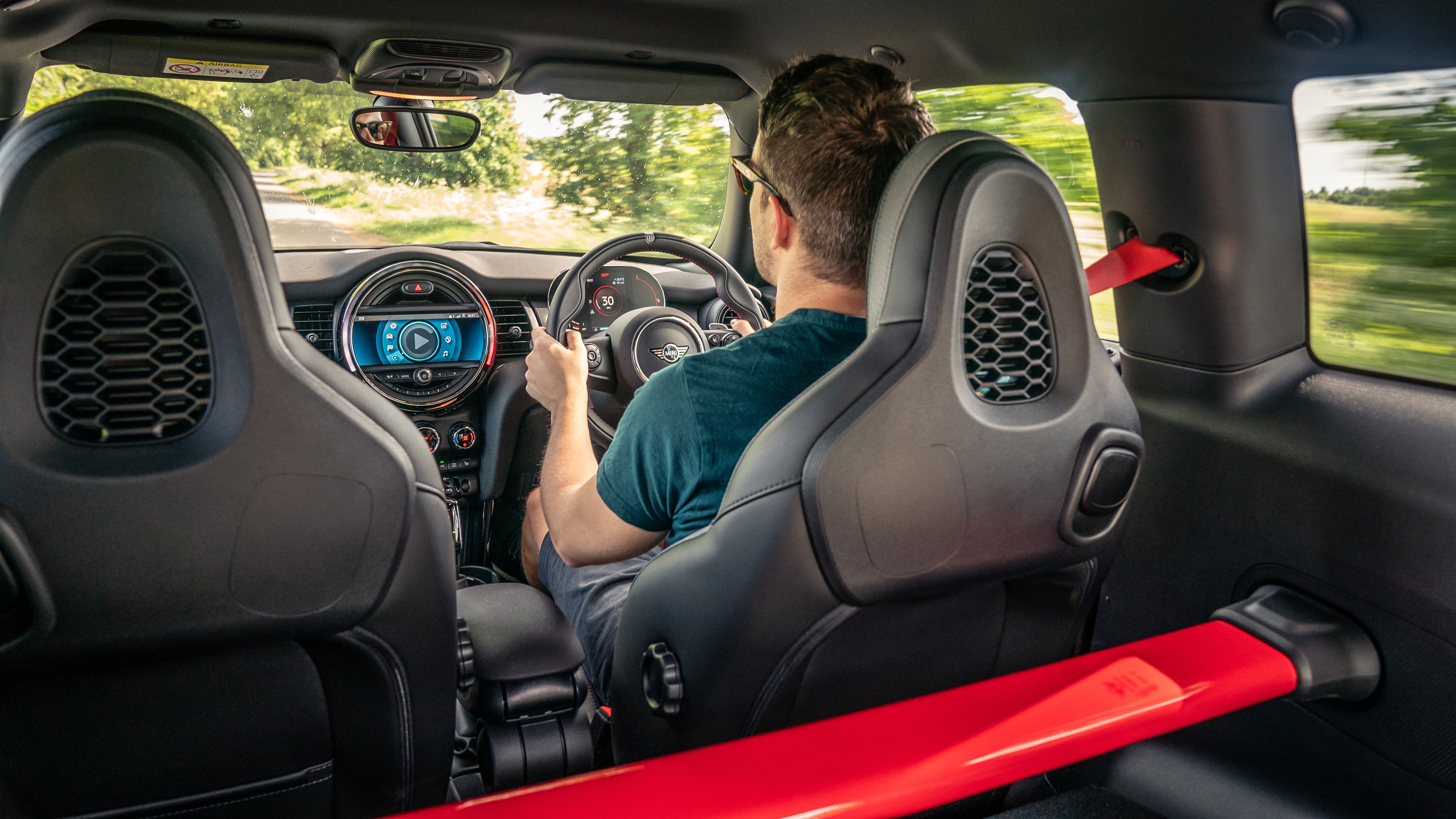
Interior
What is it like on the inside?
As ever, you drop properly low into the Mini, finding the driving position long-legged and natural: bang-on. Behind the steering wheel, a pair of 3D-printed aluminium paddleshifters; above, the Mini Electric’s digital instrument panel, with red graphics replacing green. Over your shoulder, a tomato-red strut brace and a dusty window, because in the name of hardcore, Mini’s put the rear wiper in the same skip as the back seats.
And yet, the remaining chairs are no slim-backed bucket jobs – they’re the generously-padded, heated thrones from the standard Mini JCW. There’s a full iDrive setup, dual-zone climate control, electric windows, while proper door handles get the nod over fabric straps. The most extreme Mini ever made even retains its folding armrest, which gets in the way every time you try to rip the handbrake.
In fairness, Mini GPs have always been weirdly specced. They come along towards the end of the car’s life cycle, junk the back seats, add about 20 horsepower, harden the suspension but retain the estate agent’s mod cons. The GP3 is an odd mix, then. It’s loaded with toys, the JCW-spec seats are comfortable, and the slurry auto box is easy-going around town. But because the firm ride – that’s so beautifully controlled at lout-speed – is so jarring when merely pootling, it’s not exactly an ideal commuter. And the aero kit generates a load of wind noise above 80mph. It’s like having a mountain bike on the roof.
Oh, and that strut brace in the back? Mini quietly admits that’s there mainly to stop shopping in the boot sliding forward during an emergency stop. In which case, why’s there no luggage net beneath it? Who is this car for, besides the richest of Mini fans? It doesn’t seem to wholly cater to track day fanatics or about-town posers either.
Featured

Trending this week
- Car Review
BMW 1 Series






